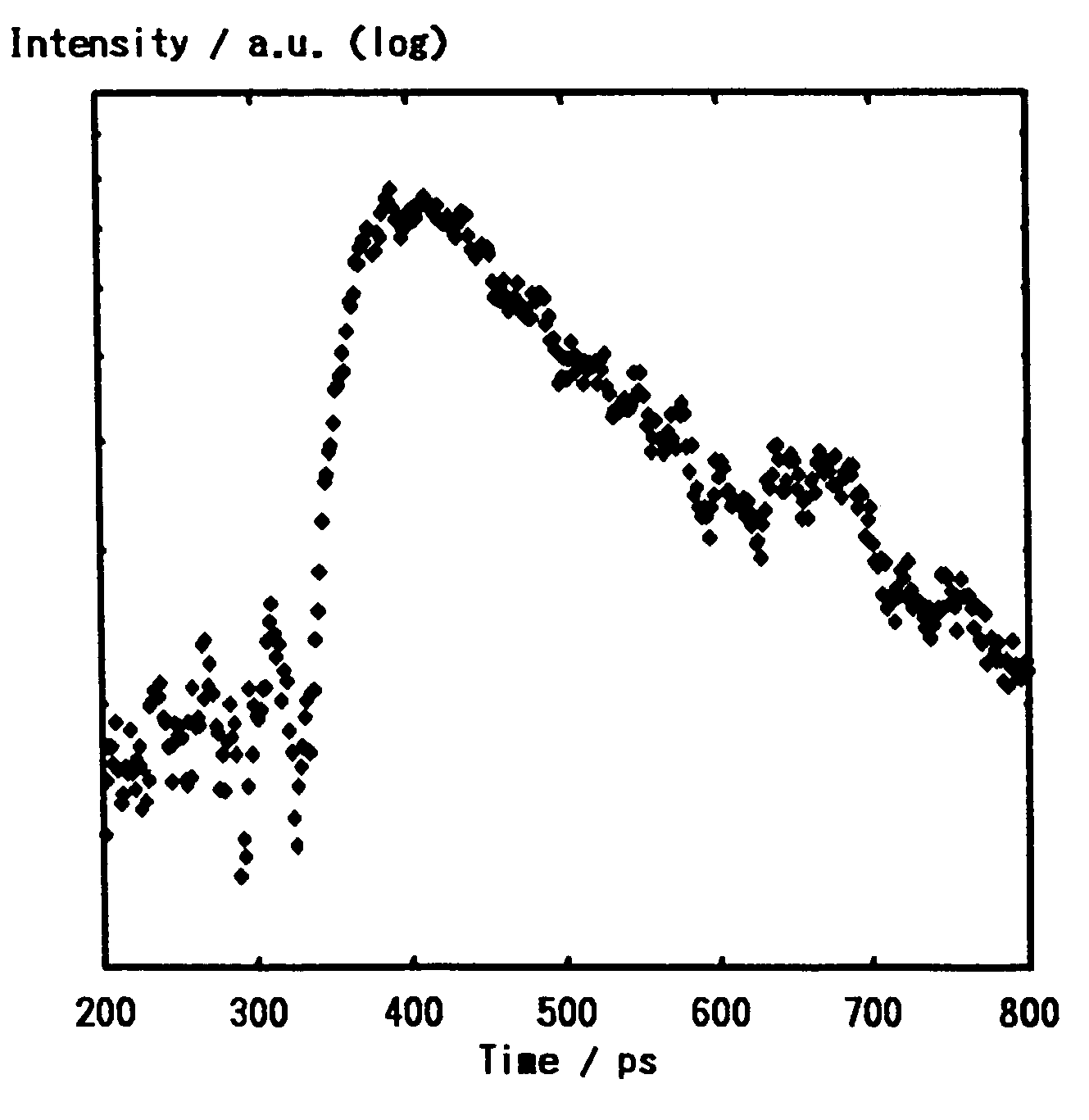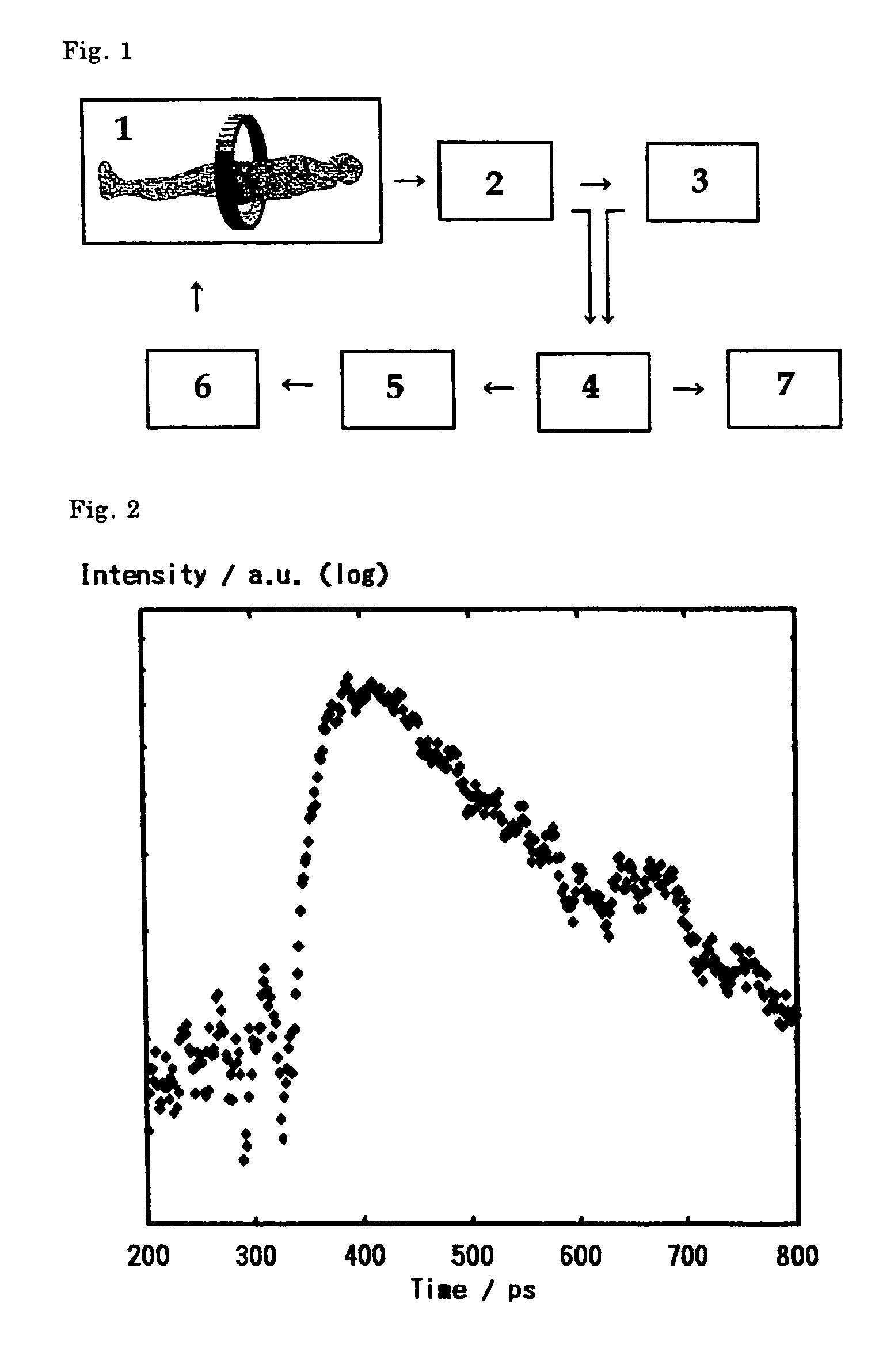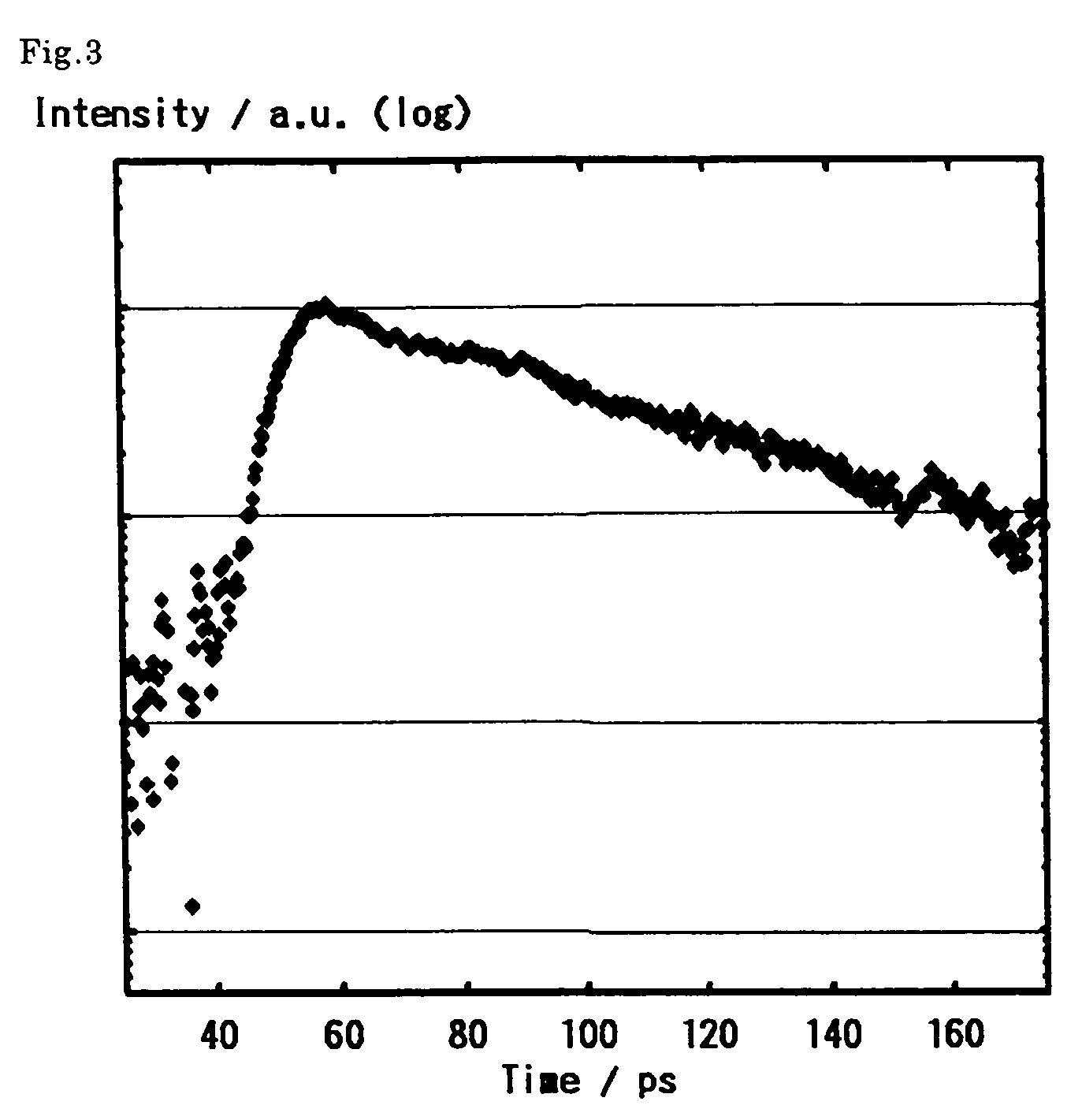Positron emission tomography device
a tomography and positron emission technology, applied in the direction of radiation intensity measurement, instruments, x/gamma/cosmic radiation measurement, etc., can solve the problems of complex computational processing, inability to determine the disappearance position of the tracer within this width, and slowdamping time of about 300 ns
- Summary
- Abstract
- Description
- Claims
- Application Information
AI Technical Summary
Benefits of technology
Problems solved by technology
Method used
Image
Examples
examples 1
[0055]60.22 g hydrobromic acid (HBr, Wako Pure Chemicals, concentration 0.48) was introduced in a 200 ml flask at room temperature, and 27.06 g of 40% aqueous methylamine solution (Wako Pure Chemicals, concentration 0.41) was gradually dripped in. As this is an exothermic reaction, the flask is placed in a water bath. Methylamine was dripped until the molar ratio of hydrobromic acid, HBr, to methylamine, CH3NH2, was 1:1. After addition was complete, the mixture was left with stirring for 1 hour to complete the reaction, and a colorless, transparent aqueous solution of methylamine bromide was thus obtained.
[0056]When the water was removed on an evaporator (water bath temperature 45° C.), a white powder of methylamine bromide remained. This was washed by diethyl ether (suction filtration), and after removing unreacted material, it was dried. The yield was 35.98 g, i.e., 90.0%.
[0057]Next, 18.8 g of the methylamine bromide obtained as mentioned above was dissolved in 100 ml DMF in a 200...
example 2
[0060]A stratified perovskite compound (C6H13NH3)2PbI4 was synthesized by reacting lead iodide, PbI2, as metal halide, with C6H13NH3I as organoamine halide acid salt in a molar ratio of 1:2, in N,N-dimethylformamide (reaction temperature: room temperature (20° C.), reaction time: 1 hour or more).
[0061]1 g of this stratified perovskite compound was dissolved in 3 ml of acetone, and spin-coated onto a silicone (Si) substrate of 2 cm side using a Shimadzu P / N 202-32016 (rotation speed: 5000 rpm, time: 30 seconds or more), so as to manufacture a scintillator (thickness of stratified perovskite compound, 0.1 micrometers). Herein, a silicon substrate is used to avoid luminescence from the substrate.
[0062]The radiation detector used in this measurement example comprises a cylindrical stainless steel pillar having a diameter of approx. 50 cm, and provided with a window on which the radiation is incident, light-receiving port, sample holder and pressure reducing device. This sample holder is...
PUM
| Property | Measurement | Unit |
|---|---|---|
| γ- | aaaaa | aaaaa |
| decay time constant | aaaaa | aaaaa |
| temperature | aaaaa | aaaaa |
Abstract
Description
Claims
Application Information
 Login to View More
Login to View More - R&D
- Intellectual Property
- Life Sciences
- Materials
- Tech Scout
- Unparalleled Data Quality
- Higher Quality Content
- 60% Fewer Hallucinations
Browse by: Latest US Patents, China's latest patents, Technical Efficacy Thesaurus, Application Domain, Technology Topic, Popular Technical Reports.
© 2025 PatSnap. All rights reserved.Legal|Privacy policy|Modern Slavery Act Transparency Statement|Sitemap|About US| Contact US: help@patsnap.com



